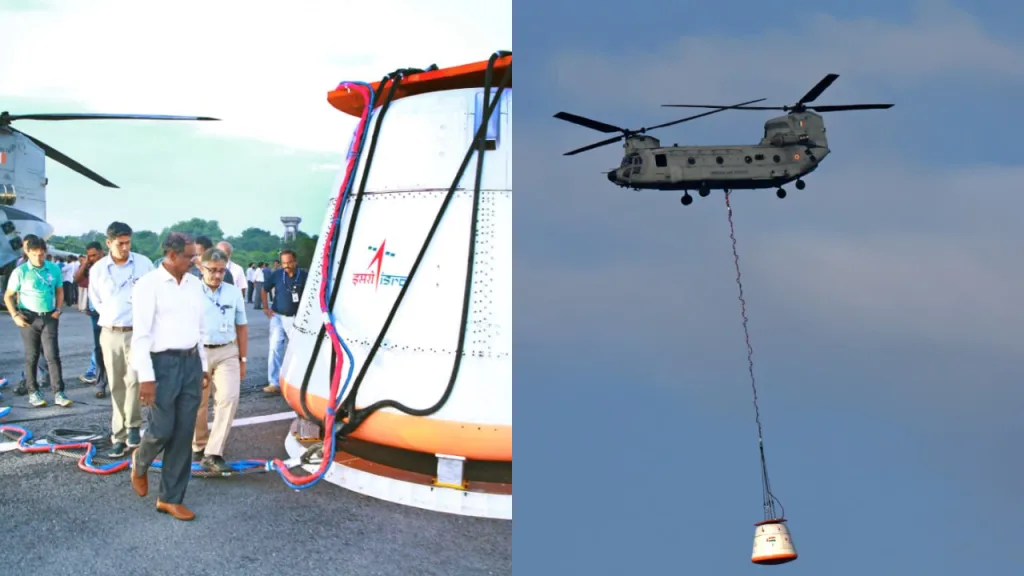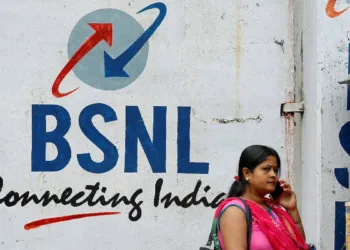India’s space ambitions reached another crucial milestone as ISRO successfully completed its first Integrated Air Drop Test (IADT-01) on August 24, 2025, at Satish Dhawan Space Centre, Sriharikota. This groundbreaking test validates the parachute-based deceleration system that will ensure the safe return of astronauts in the upcoming Gaganyaan mission, bringing India one step closer to joining the elite club of spacefaring nations.
Table of Contents
ISRO Test Mission Breakdown: Key Details
| Test Component | Details | Purpose |
|---|---|---|
| Test Name | Integrated Air Drop Test (IADT-01) | End-to-end system validation |
| Location | Satish Dhawan Space Centre, Sriharikota | Controlled testing environment |
| Collaboration | IAF, DRDO, Navy, Coast Guard | Multi-agency expertise |
| System Tested | Parachute-based deceleration system | Crew module safe splashdown |
| Mission Timeline | December 2025 (G1 uncrewed mission) | Preparation milestone |
What Makes This Test Critical for India’s Space Program
Life-Saving Technology: The parachute system tested represents the most critical safety component of the Gaganyaan mission. This system must function flawlessly to ensure astronauts can safely return to Earth after completing their space journey.

Multi-Agency Collaboration: The successful test involved coordinated efforts from the Indian Air Force, DRDO, Navy, and Coast Guard, demonstrating India’s integrated approach to space exploration and the collective expertise driving the mission forward.
End-to-End Validation: Unlike previous component tests, IADT-01 provided comprehensive validation of the entire deceleration sequence, from parachute deployment to final splashdown simulation, ensuring all systems work seamlessly together.
Gaganyaan Mission Timeline and Significance
Immediate Next Steps: ISRO plans to launch its first uncrewed Gaganyaan mission (G1) in December 2025, featuring Vyommitra, a half-humanoid robot designed to monitor spacecraft systems and simulate human reactions to microgravity.
Historic Achievement Ahead: When successful, India will become the fourth country in the world to independently send humans into space, with the first crewed spaceflight expected in 2028.
National Pride: This achievement positions India alongside the United States, Russia, and China as nations capable of independent human spaceflight, representing a quantum leap in the country’s technological capabilities.
Technical Innovation Behind the Success
Advanced Parachute Design: The system incorporates multiple parachute stages designed to gradually reduce the crew module’s descent speed, ensuring a controlled and safe landing in the designated recovery zone.
Recovery Operations: The test validated not just the parachute deployment but also the recovery procedures that will be crucial for retrieving astronauts and the crew module after splashdown.
Safety Redundancy: Multiple backup systems ensure mission success even if primary components encounter issues, reflecting ISRO’s commitment to astronaut safety.
Global Context and Future Implications
This successful test places India firmly on the global space map, demonstrating the country’s growing technological prowess and commitment to peaceful space exploration. The Gaganyaan program represents more than just a space mission – it’s a testament to India’s scientific capabilities and ambitious vision.
International Recognition: The successful completion of IADT-01 has garnered attention from international space agencies, positioning India as a reliable partner for future collaborative missions.
Economic Impact: The success of Gaganyaan will likely boost India’s commercial space sector, attracting international investments and establishing the country as a major player in space technology.

For official updates on the Gaganyaan mission progress, visit the Indian Space Research Organisation website for the latest announcements and technical details.
Frequently Asked Questions
Q: What exactly was tested in ISRO’s first Integrated Air Drop Test (IADT-01) for the Gaganyaan mission?
A: ISRO’s IADT-01 comprehensively tested the parachute-based deceleration system that will ensure safe crew module recovery during the Gaganyaan mission. The test validated the end-to-end performance of multiple parachute deployment stages, from initial deployment to final splashdown simulation. Conducted at Sriharikota in collaboration with IAF, DRDO, Navy, and Coast Guard, the test confirmed that the system can safely reduce the crew module’s descent speed and enable controlled water landing for astronaut recovery.
Q: When will India’s first crewed space mission launch and how does this test contribute to that timeline?
A: India’s Gaganyaan program follows a phased approach: the first uncrewed mission (G1) is scheduled for December 2025, featuring the Vyommitra robot, while the first crewed mission is planned for 2028. The successful IADT-01 test is crucial for maintaining this timeline as it validates one of the most critical safety systems. This milestone ensures that when Indian astronauts do travel to space, they have a proven, reliable method for safe return to Earth, making India the fourth country to achieve independent human spaceflight capability.








